|
|
|
Sort Order |
|
|
|
Items / Page
|
|
|
|
|
|
|
| Srl | Item |
| 1 |
ID:
093895


|
|
|
|
|
| Publication |
2010.
|
| Summary/Abstract |
Israel's general elections in 2009 yielded three major outcomes: 1) the replacement of the bi-polar system that characterized Israeli electoral politics between 1977 and 2003 in which most parties are aligned to one of the two principal parties by a more flexible multi-party system. 2) The nearly total collapse of the Labor party and the Zionist left; for the first time since the 1920s, the Labor party was no longer a major political player, and 3). Kadima's electoral relative success, despite scandals haunting it since 2006. Kadima has basically superseded Labor without necessarily adopting its ideology. We argue (contrary to Henry Kissinger's quip that Israel never had a foreign policy but only a domestic policy) that primarily external factors and processes - chiefly the failure of the Oslo process in the 1990s - yielded these three outcomes.
|
|
|
|
|
|
|
|
|
|
|
|
|
|
|
|
| 2 |
ID:
163294
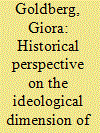

|
|
|
|
|
| Summary/Abstract |
This article argues that since 1977 policy changes of the new Likud government were small, but they engendered a tremendous shift in consciousness, as well as a symbolic change. Israel’s character as a Jewish state was greatly augmented. A new Israeli identity emerged, grounded primarily in Jewish roots with a preference for communal over state identity. Political ideologies in democracies are poor. The ‘iron law of ideology’ states that political parties, principally those that form governments, do not realise their ideological principles. The case of Herut, the maternal party of Likud, is a typical example of this law.
|
|
|
|
|
|
|
|
|
|
|
|
|
|
|
|
| 3 |
ID:
093897
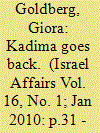

|
|
|
|
|
| Publication |
2010.
|
| Summary/Abstract |
Kadima lost the 2009 elections to the Likud after it had come to power in the 2006 elections. While Kadima only lost one seat (28 instead of 29), and even remained the largest party in the Knesset, it had no chance of remaining in power. Kadima is the most important phenomenon in the Israeli party system in recent years. Despite the fact that it did not win the 2009 elections its influence on the political system has been enormous. After its victory in 2006 Labour and Likud tried to copy it, as happens with every successful product. The best way to relate to Kadima is as a completely different phenomenon, in terms of the standard tools of the historical party map and the traditional division into blocs. This approach denies the former five conceptions of Kadima: a classic centre party, a neo-centrist party, a centrist party in the left bloc, a faction in the Likud or a middle party.
|
|
|
|
|
|
|
|
|
|
|
|
|
|
|
|
| 4 |
ID:
093898
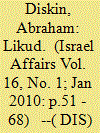

|
|
|
|
|
| Publication |
2010.
|
| Summary/Abstract |
In 1957 Downs claimed that most voters tend to hold centrist views. Hence, political parties should adopt centrist stands in order to attract as many voters as possible. Another aspect of the 'political centre' derives from prominent theories on coalition formation: the political party that captures the 'median' position in the parliament enjoys a tremendous advantage. The battle over the control of 'the centre' played a major role in the strategy of Likud in the 2009 Knesset elections, and in its ability to form a coalition following the elections. Although Kadima won one more seat than Likud, it lost the battle on the centre. Netanyahu, loyal to his centrist tendencies during the campaign, preferred to have only a segment of Labour in his coalition, at the cost of five ministerial posts, rather than to enjoy the support of the radical National Union at the cost of a single ministerial post.
|
|
|
|
|
|
|
|
|
|
|
|
|
|
|
|
| 5 |
ID:
093896
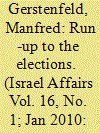

|
|
|
|
|
| Publication |
2010.
|
| Summary/Abstract |
On 26 October 2008 President Shimon Peres called for new elections. The Knesset was dissolved on 11 November. Three candidates claimed that they were in the running for prime minister: Livni, Netanyahu and Barak. The election campaign would focus more on individuals than on parties. The security issue took high priority in the elections. A major issue throughout the campaign was the position of the leading parties on the establishment of two states for two peoples as part of a peace agreement. The internet became a major tool in the campaign. On the morning of 27 December, the IDF began a war in the Gaza Strip, which Israel called Operation Cast Lead. The major parties agreed to suspend their campaigns until the end of the war. Kadima's victory with 28 seats came as a surprise. The Likud came second with 27 seats, having lost voters at the end of the campaign to the third largest party Yisrael Beiteinu, which ended up with 15 Knesset seats. Looking back at the election campaign one can best define it as a broken and shortened one.
|
|
|
|
|
|
|
|
|
|
|
|
|
|
|
|
| 6 |
ID:
164905
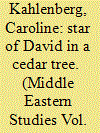

|
|
|
|
|
| Summary/Abstract |
The American University of Beirut's emergence as a hub of Arab national and cultural identity in the first half of the twentieth century has been well documented by historians. The simultaneous Zionist presence on campus has been largely overlooked. Zionist ideas were predominantly promoted by Palestinian Jewish students who formed a small but vocal minority at AUB prior to 1948. Faculty and non-Jewish students also regularly collaborated with and traveled to Zionist institutions in Palestine for academic, athletic, and leisure purposes. For Arab students on campus, therefore, Zionism was not an abstract concept, but rather a national identity embodied by fellow classmates and friends on campus. As the conflict in Palestine increased in the 1930s and 1940s, so too did political activism and tensions on campus between Zionist and Arab nationalist students. This article analyzes this unique period of exchange, collaboration, and friction at AUB, which came to a swift end with the outbreak of the 1948 War. By focusing on the interactions between Arab and Zionist Jewish students at AUB, I seek to extend the ‘relational’ approach towards Jewish-Arab contact beyond Palestine's borders.
|
|
|
|
|
|
|
|
|
|
|
|
|
|
|
|
|
|
|
|
|